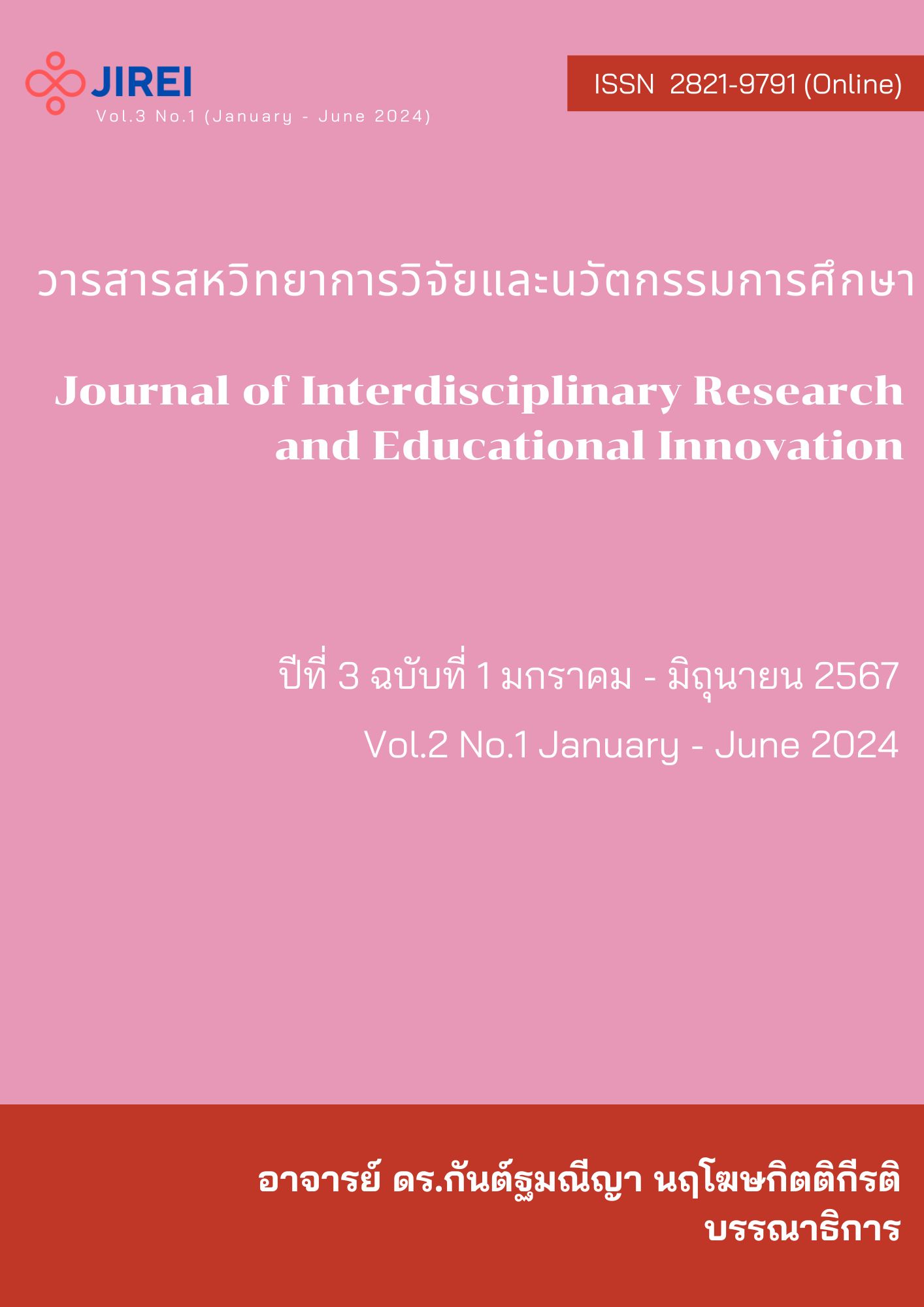ภาวะผู้นำแบบคล่องตัว (Agile Leadership) : รูปแบบใหม่ของผู้นำในยุคดิจิทัล
คำสำคัญ:
ภาวะผู้นำแบบคล่องตัว, ยุคดิจิทัลบทคัดย่อ
ภาวะผู้นำแบบคล่องตัวเป็นรูปแบบใหม่ของผู้นำในยุคดิจิทัลที่สามารถปรับตัวให้องค์กรเจริญ ก้าวหน้าในสภาพแวดล้อมที่คล่องตัวและขับเคลื่อนกระบวนการและผลลัพธ์ให้ประสบความสำเร็จ เป็นผู้ที่สามารถปรับตัวให้เข้ากับการเปลี่ยนแปลงได้อย่างรวดเร็ว ปรับเปลี่ยนกลยุทธ์ให้ทันกับโลกาภิวัตน์ ส่งเสริมวัฒนธรรมแห่งการเรียนรู้และนวัตกรรมอย่างต่อเนื่อง สนับสนุนให้บุคลากรทดลอง เรียนรู้จากข้อผิดพลาด นำมาพัฒนางานให้เกิดความได้เปรียบในการแข่งขันกับองค์กรอื่น โดยมีองค์ประกอบสำคัญ ได้แก่ การปรับตัวและยืดหยุ่น การมีวิสัยทัศน์ การจัดการการเปลี่ยนแปลง ความเห็นอกเห็นใจ การสร้างบรรยากาศเชิงบวก การสื่อสารที่มีประสิทธิภาพ และความอยากรู้อยากเห็น
เอกสารอ้างอิง
Adhiatma, A. Fachrunnisa, O.& Rahayu, T. (2022). Creating digital ecosystem for small and medium enterprises: The role of dynamic capability, agile leadership and change readiness. Science. Technology. Policy Manage, 14 (2), 941–959.
Appelo, J. (2011). Management 3.0: Leading agile developers, developing agile leaders. New Jersey: Addison-Wesley.
Baker, S.W., & Thomas, J.C.(2007). Agile Principles as a Leadership Value System: How Agile Memes Survive and Thrive in a Corporate IT Culture. In: Agile 2007, pp. 415–420.
Bligh, M.C.; Kohles, J.C.& Yan, Q. (2018). Leading and Learning to Change: The Role of Leadership Style and Mindset in Error Learning and Organizational Change. Change Manage, 18 (3), 116–141.
Breakspear, S. (2017). Embracing Agile Leadership for Learning: How leaders can create impact despite growing complexity. Aust. Education. Leader. , 39, 68–71.
Crocitto, M., Youssef, M. (2003). The Human Side of Organizational Agility. Industrial Management and Data Systems, 103, 388–397.
Dai, G.; De Meuse, K.P.&Tang, K.Y. (2013).The role of learning agility in executive career success: The results of two field studies. J. Management, 25, 108–131.
Eilers, K.; Simmert, B.& Peters, C. (2020). Doing Agile vs. Being Agile—Understanding Their Effects to Improve Agile Work. In Proceedings of the International Conference on Information Systems (ICIS), Hyderabad, India, 13–16 December 2020.
Haneberg, L.(2011). Training for agility: building the skills employees need to zig and zag. Human Resource Management International Digest ,20(2), 50–58.
Hayward, S. (2021). The Agile Leader: How to Create an Agile Business in the Digital Age; London :Kogan Page.
Hayward, S. (2018). The agile leader: How to create an agile business in the digital age. London: Kogan Page.
Gehler, C.P. (2005) Agile Leaders, Agile Institutions: Educating Adaptive and Innovative Leaders for Today and Tomorrow; Strategic Studies Institute, US Army War College: Carlisle, PA, USA.
Huning, T.M.; Hurt, K.J.& Frieder, R.E. (2020).The effect of servant leadership, perceived organizational support, job satisfaction and job embeddedness on turnover intentions: An empirical investigation. Evid.-Based HRM , 177–194.
Kidd, P.T.(2005). Agile Manufacturing: Forging New Frontiers. London: Addison-Wesley Longman.
Koning, P. (2020). Agile leadership toolkit: Learning to thrive with self-managing teams. Boston: Addison-Wesley.
Krieg, A. (2019). Agile Organisation und agiles Change-Management. Gesellschaft Management, 12(3), 253-265.
Lewandowska A.& Stopa M. (2013). Innovation quality. Qualitative perspective of innovation leaders in Podkarpackie region, Poland. World Academic. Science . Technology, 81 4),1049–1055.
Murray, A. & Greenes, K. (2006). New leadership strategies for the enterprise of the future. VINE, 36, 358–370.
Nold, H. & Michel, L. (2016) The performance triangle: a model for corporate agility. Leadership. Organization. Development, 37, 341–356.
Parker, D., Holesgrove, M.,& Pathak, R. (2015). Improving productivity with self-organised teams and agile leadership. International Journal of Productivity and Performance Management, 64, 112–128.
Prasongko, A.& Adianto, T. (2019).The Role of the Agile Leadership Model as a Competitive Advantage for the Future Leader in the Era of Globalization and Industrial Revolution 4.0. Pertahanan, 5, 126–133.
Purdy, N. (2016).Impact of a Leadership Development Institute on Professional Lives and Careers. Nurse. Leadership, 29, 10–30.
Sanatigar, H.& Hadi Peikani, M. (2017). Gholamzadeh, D. Identifying organizational agility and leadership dimensions using Delphi technique and factor analysis: An investigation among public sector pension funds (PSPFs) in Iran. . Public Leadership,13, 276–294.
Sharifi, H.& Zhang, Z. (1999). A methodology for achieving agility in manufacturing organisations: An introduction. International journal of production economics,62(1-2), 7–22.
Walter-Güpner, T. (2021). Effects of Agile Leadership and Organizational Competencies on Firm Performance. Evidence-Based Recommendations for Agile Transformation in the Manufacturing Industry by Comparing Software and Manufacture





